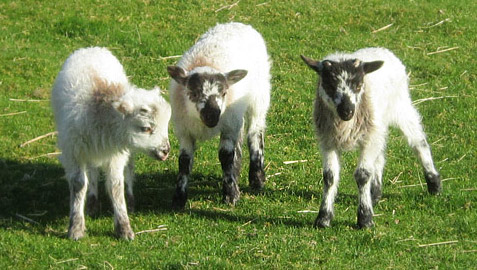 The Rare Breeds Survival Trust was established in 1973 and aims to keep alive breeds that are in danger of becoming extinct.
The Rare Breeds Survival Trust was established in 1973 and aims to keep alive breeds that are in danger of becoming extinct.
Since then the Boreray breed has been on the Trust’s ‘watchlist’ as a breed at risk of extinction. All the Borerays registered with the Trust can be traced back to the original six sheep taken off the island in 1971, through records kept by the breeders since then.
Until 2015 the breed was the only sheep breed listed in the RBST’s ‘Critical’ category 1, with fewer than 300 breeding ewes, but then moved to the ‘Endangered’ category 2, with between 300 and 500 breeding ewes. In 2020 Boreray moved to category 3, ‘Vulnerable’ with between 500 and 900 breeding ewes. Boreray numbers had increased from 211 registered breeding ewes in 2010 to 595 in 2018, an increase of 180% in just eight years. The RBST have now revised the way that the categories are determined. As a result of the sustained growth of the Boreray breed and a more genetically diverse breeding population, the breed is now classified as ‘At Risk’. But the future looks very good. For more information, please see the RBST website.
Why preserve the Boreray breed?
- They are long-lived, and ewes can lamb into their teens.
- Lambing is normally trouble-free – the ewes usually lamb outside and don’t need any assistance (we have only had to help with six of the 56 lambs we have had so far). They have a tendency to lamb later than most other breeds, after the worst of the winter has passed – usually late March/early April.
- The ewes are excellent mothers and extremely protective. They usually produce just one lamb, although twins are becoming more common.
- Conservation grazing – Boreray can graze sites where many other breeds would struggle. They are very hardy and can withstand cold and wet very well, only seeking shelter in extreme conditions.
- There is a lot of anecdotal evidence of a high resistance to the common sheep ailments such as foot rot and fly strike.
A lot of these attributes could be important in the development of new breeds that would be produced by cross-breeding other breeds with Borerays. These would be low-maintenance, less prone to illness, hardier and more self-sufficient than the commercial breeds that exist today and are our prime source of wool and lamb or mutton. The meat is low in cholesterol and in fat.

